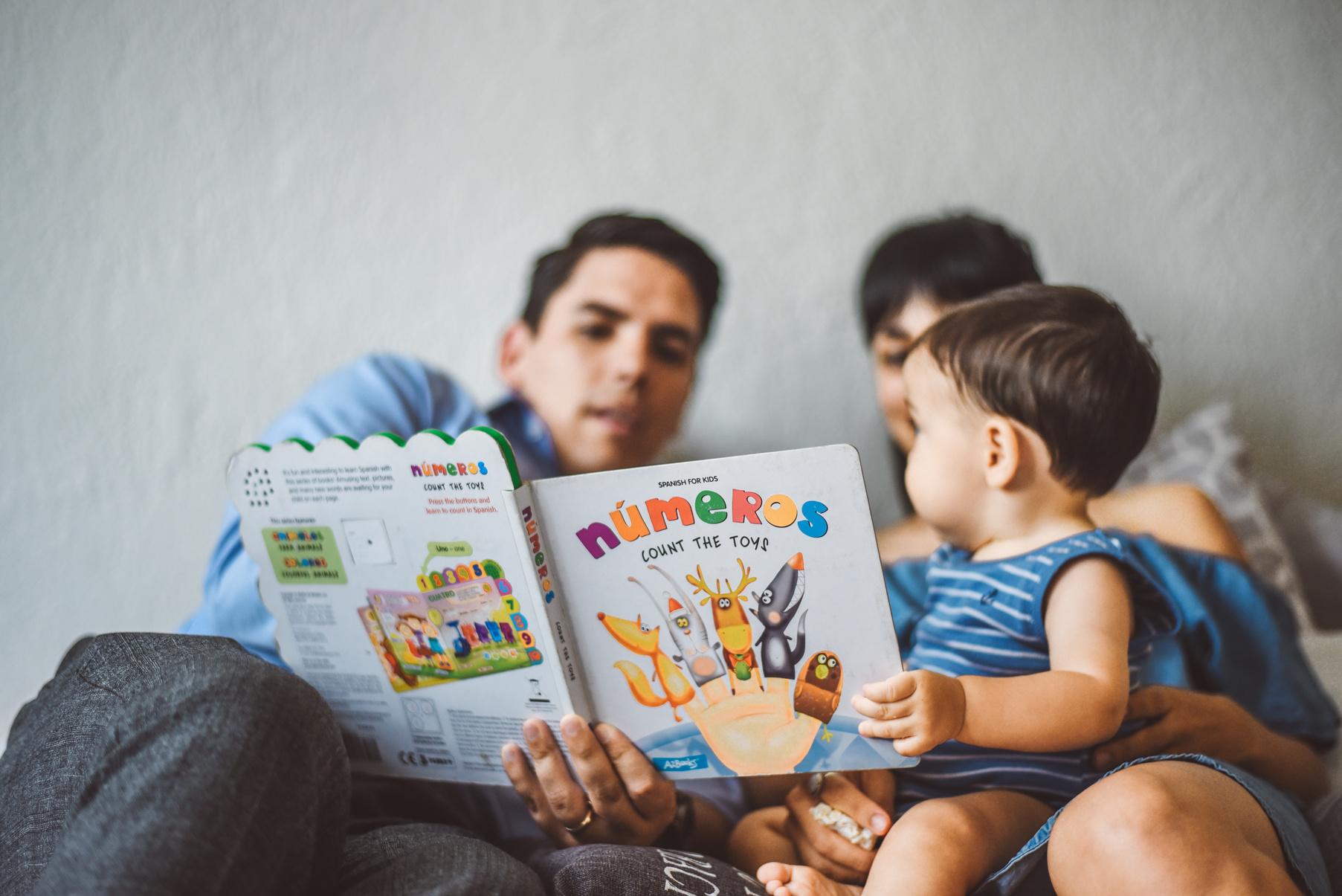

Caregivers who play math games and activities with children outside of school support their children’s school readiness.
In a recent review, across 25 studies including over 3,500 children, math games and activities outside of school time were significantly linked to children’s math skills and school readiness
MATH AT HOME MATTERS
Support your child's school readiness with simple, easy math games and activities
84%
chance your child will benefit
Findings estimate there is an 84% chance that math activities offered outside of school will improve children’s math skills.*
Early math development is associated with later math achievement in school, as well as other early-developing skills, such as literacy.
*This assumes your families, children, and math interventions are similar to the ones in this review

WHERE TO TALK ABOUT MATH
Everywhere! Using math language in everyday activities helps support your child.
Math activities done outside of school are linked to math knowledge and fluency.
Spaces outside of school might include: sports facilities libraries museums
1 Nelson, G , Carter, H , Boedeker, P , Knowles, E , Buckmiller, C , & Eames, J (2023) A meta-analysis and quality review of mathematics interventions conducted in informal learning environments with caregivers and children Review of Educational Research https://doi org/10 3102/00346543231156182 1
WHEN TO TALK ABOUT MATH
STORYTIME
Incorporate math into reading by describing the illustrations using math language or specific numbers.
Focus on Math Concepts
Ask questions that encourage your child to use math language or count. Compare amounts and sizes of pictures. Count objects.
Describe pictures using the terms above. ("There are so many cats." "The boy has several toys, but his friend only has a few.")
Ask your child to tell you about the picture and prompt with math questions. ("How many? Who has more?")
Plan Ahead
It helps to take a few minutes to go through books on your own and think about some ways you can incorporate math. Preparing this way might take off some of the pressure of trying to think of things in the moment. Teachers will often write notes to themselves on post-its and stick them in the book to remind themselves to ask certain questions or make certain observations.

PLAYTIME COOKING AND MEALTIME
Ask your children to write out the grocery list. While older children can use letters and numbers, younger children might be encouraged to draw pictures of the items or to use a combination of letters, numbers, and pictures.
Include your children in reading recipes and gathering and measuring ingredients.
Check your local library for board games or card games. Look for games that allow children to count past 10 and include shapes as well as numbers. For example, Chutes and Ladders and the Great Race.
Look for card games that incorporate matching or comparing amounts.
Create your own games with dice. Include things like comparing amounts and adding or subtracting numbers.
GENERAL MATH DISCUSSIONS Shape
Patterns
measuring Spatial relations/locations
characteristics
Informal
Recommended citation for this brief: Day, E., Golfen, J., & Shimmel, L. (2023). Math at home matters: Supporting your child's school readiness with simple, easy math games and activities. HEDCO Institute for Evidence-Based Educational Practice. hedcoinstitute.uoregon.edu/promoting-math-outside-school Funding for Nelson and colleagues research was supported by grant #2000292/2313440 funded by National Science Foundation in the Division of Research on Learning in Formal and Informal Settings. https://doi.org/10.17605/OSF.IO/7RC4F




